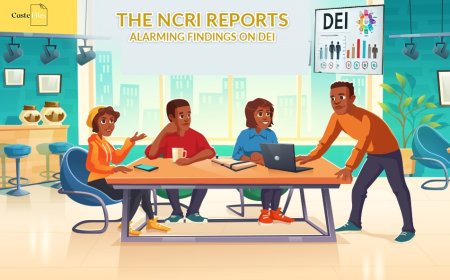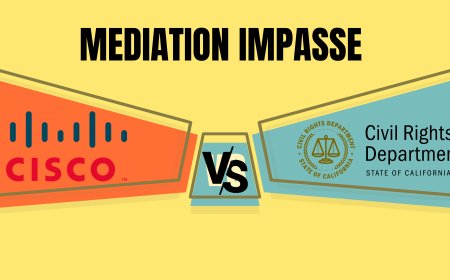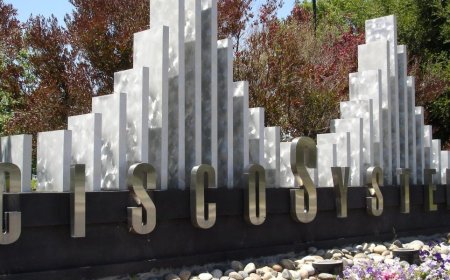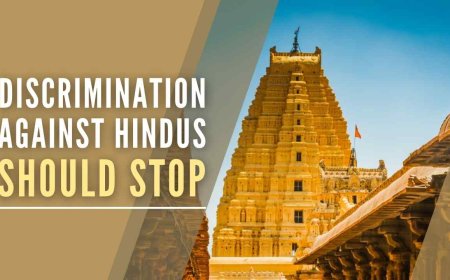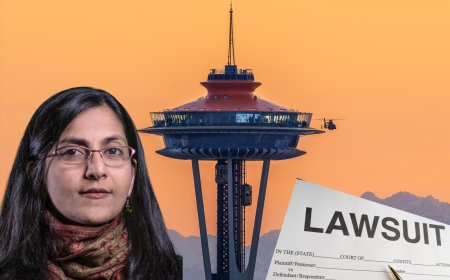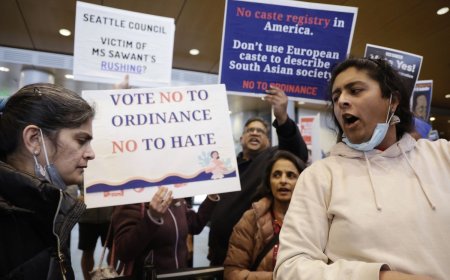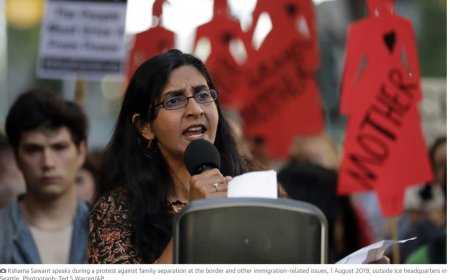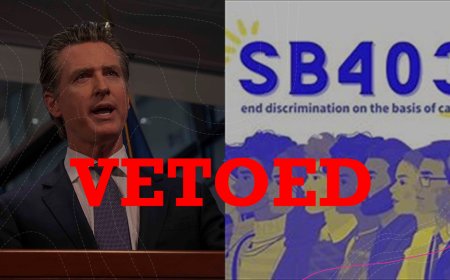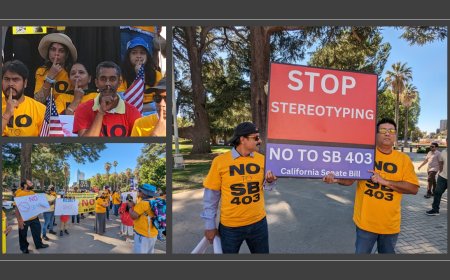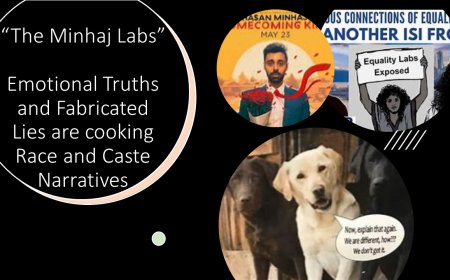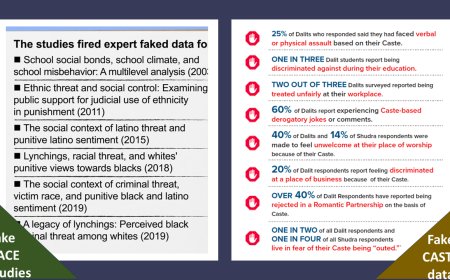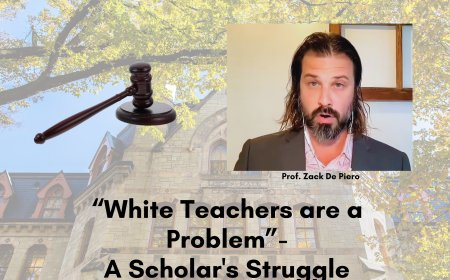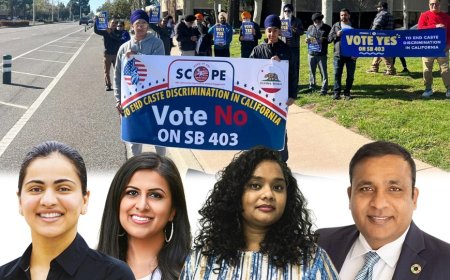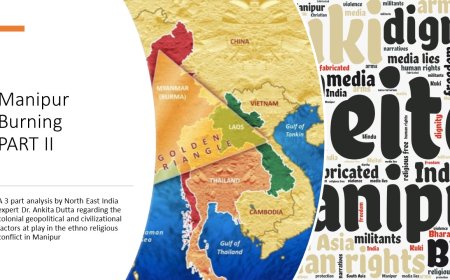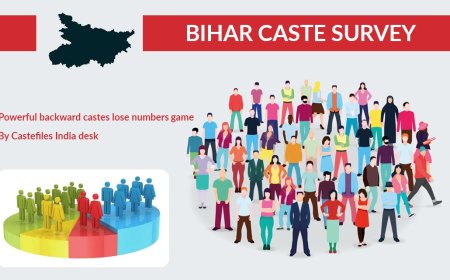Bihar Caste Survey III - Breaching the Rubicon of Reservations
A controversial caste survey conducted by the Bihar Government triggers memories of the contentious Mandal era and the formation of new voting blocs. Just as Pew Research suggested, the Bihar Caste survey reveals that poverty in Bihar has no significant skews and is largely caste agnostic. This is the third in a series of explainers by Castefiles discusses how the data reveals more than what Social Justice Warriors bargained for. The economic data released as the second tranche of the Bihar Caste Survey confirms what is common knowledge regarding poverty and its patterns of distribution along caste lines - reminiscent of the colonial era. However, close scrutiny serves up some explosive facts that practitioners of caste politics can neither account for nor answer.
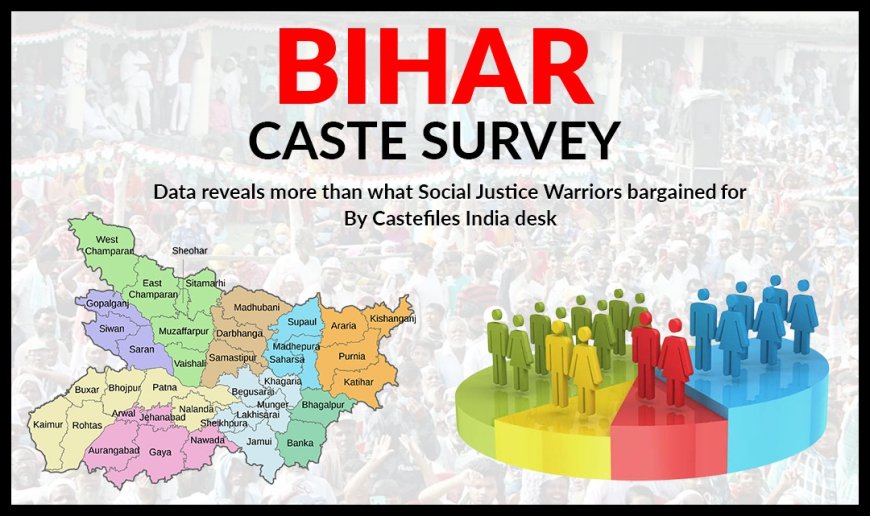
November 20, 2023: When Bihar Chief Minister Nitish Kumar recently launched into a harangue on how the modest gains in female education had resulted in young married women widely adopting coitus interruptus and triggering a reversal in high female fertility rate in his backward state, the all-round view was that he had crossed a line with the bizarre rant. As furor erupted over the crude hand gestures, and colorful, graphic details in his outrageous declamation, Kumar apologized unconditionally and retracted his tirade a day later.
But there is no going back on the first half of the same speech Kumar made on the floor of the Bihar Legislative Assembly in which he announced to up the caste-based reservation in Government jobs and seats in education institutions to 65 percent, breaching the 50 percent Rubicon set by the Supreme Court of India in the famous 1992 Indira Sawhney judgment. With 10 percent reservation in place for economically weaker sections (EWS), the total reservation in Bihar now stands at 75 percent.
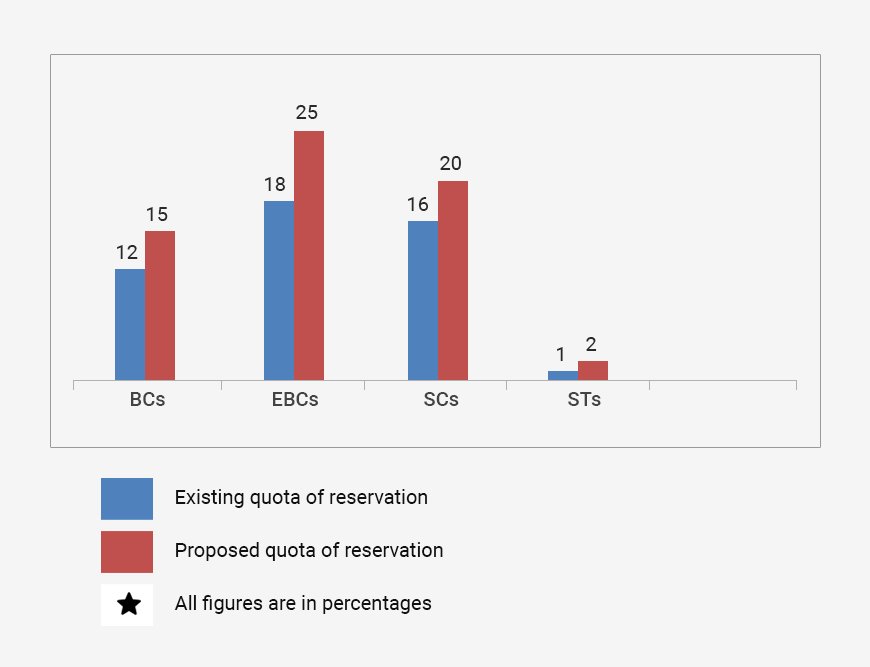
The announcement was expected as the natural follow-up of the caste survey exercise carried out in Bihar. The caste-wise break-up of Bihar's population was released in early October. The hike in reservations for backward castes (BCs), extremely backward castes (EBCs), scheduled castes (SCs), and scheduled tribes (STs) is roughly predicated on the share of these groups in the population.
Poverty is Caste- Agnostic and Bihar Data Mimics Pew Research Findings
Kumar referred to the economic data, especially the poverty figures, collected during the survey to justify the increase in reservation quotas. Just like his gaffe-riddled spiel on the reasons for the declining fertility rate in Bihar - after all, coitus interruptus is hardly as effective as contraception - the poverty figures that Kumar put out could also be unreliable.
Renowned Delhi-based academic and London School of Economics (LSE) doctorate Manisha Priyam told a popular YouTube podcast that surveyed communities were prone to understating their income in expectation of fresh doles, and a truer picture emerged only when self-reporting was tested against proxy indicators.
For the purpose of the survey, the cut-off for poverty was Rs. 6000 (roughly USD 70) per month per household. Discounting the understatement of income uniformly across communities, the difference in poverty rates between upper castes on the one hand, and castes under BCs and EBCs categories on the other, isn't all that wide as the following chart based on the survey data shows:
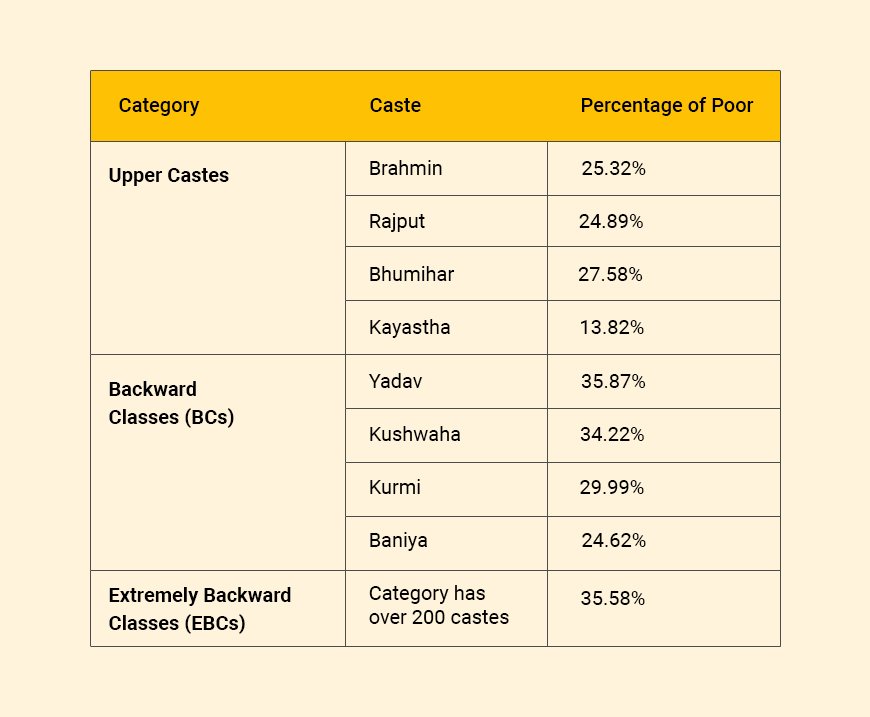
As per the report, 25.09 percent of upper castes, 33.16 percent of BCs, and 33.58 percent of EBCs are poor. While there is a very slim difference between BC and EBC poverty rates, the difference between the upper castes on the one hand, and the BCs and EBCs on the other, isn't all that wide either. A little more than eight percent of EBCs and BCs are poorer than the upper castes.
One of the most striking elements of the data is the 27.58 percent poverty rate amongst Bhumihars, an upper caste unique to Bihar and the adjoining Eastern part of the neighboring state of Uttar Pradesh. While they are believed to be politically and socially dominant, the prevalence of poverty amongst Bhumihars is more than among Baniyas, who are considered backward.
This raises a serious question about the dominant narrative of social justice warriors. If caste discrimination by upper caste Hindus over millennia has left others far behind, how come some segments of the backward are better off than some sections of upper castes?
Poverty amongst SCs (42.93 percent) and STs (42.70 percent), both of whom enjoy wide-ranging Constitutionally mandated affirmative action proportional to their population, is more than other categories. Seats are reserved for SCs and STs exclusively in Parliament and state legislatures, and their quota in government jobs and educational institutions is the oldest such arrangement in India since Independence.
Political Bait of Reservations Fails to Deliver in Politics and Education
The demonization of so-called "upper" castes as oppressors of Dalits, fails to explain their own high poverty rates, which in the case of Bhumihars is even higher than the backward Baniyas and comparable to Kurmis. Given the fact that Bihar has been ruled by backward class leaders Lalu Prasad Yadav, his wife Rabri Devi (both Yadavs), and Nitish Kumar (Kurmi) as chief ministers for the last three decades straight, it's baffling how they still raise the bogey of lack of social empowerment.
Their own lack of initiative to set things right is apparent in how the Bandyopadhyay Commission report suggesting ways for land reforms in Bihar has been treated. It was submitted in 2008 when Nitish was still the chief minister and has since been gathering dust, with even his ideological cohort on the Left lamenting inaction in the matter.
There are further clues on what's really gone wrong. During the debate over Nitish's proposal in the Bihar State Assembly, veteran leader and BJP MLA, Nandkishore Yadav, himself a backward, wondered what the point of hiking reservation quotas was when not sufficiently qualified candidates were available to fill even the current number of seats.
The more thoughtful leadership on the Left realizes the root of the problem, which begins with the utter lack of quality public education, especially schooling. "There is no substitute for education," Yogendra Yadav, an academic turned policy wonk/politician, admitted to a popular YouTube podcast.
Lack of quality in Government-funded schooling has been the bane of most North Indian states including Bihar. Sometime in the late 1960s, Bihar's practitioners of caste politics belonging to the Lohiaite socialist strand (named after the late leader, Rammanohar Lohia) drove English out of school curriculum up to the level of matriculation.
That act of extreme ideological caprice has left three generations of Biharis without adequate skills to work in the booming service sector of the Indian economy, especially since the 1990s. The mere mechanical tinkering with job and education quotas would hardly make up for such poor policy choices and bad governance structures in sectors like education. If anything, returning to the old political bait of reservations is a tacit admission by India's social justice warriors that they just don't have the capacity to deal with dysfunction.


